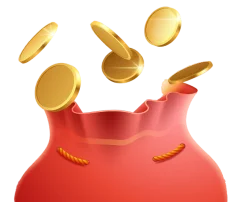Please allow ads on our site
Please log in to access this content. You will be redirected to the login page shortly.
LoginGive an account of Earthworm with itphysiological process.
Science Science QA in Science 3 years ago
Anearthwormis a tube-shaped, segmentedwormfound in the phylumAnnelida. Earthworms are commonly found living in soil, feeding on live and dead organic matter. An earthworm's digestive system runs through the length of its body. It conducts respiration through its skin. It has a double transport system composed ofcoelomic fluidthat moves within the fluid-filledcoelomand a simple, closed blood circulatory system. It has a central and a peripheral nervous system. The central nervous system consists of two ganglia above the mouth, one on either side, connected to a nerve cord running back along its length to motor neurons and sensory cells in each segment.
Worms are annelids, from the Latin word anulus meaning "ring." Worms are made up of joined, ringed segments. An adult redworm has between 200 to 400 circular rings. Try thinking of the giant sequoia trees and their rings. The tree rings grow around each other while the worm rings are stacked end on end.
The cuticle is the worm's outermost body wall. Beneath the cuticle are:
the epidermis, which is like our skin,a layer of nerve tissue which performs like our sense of touch,circular and longitudinal muscles for locomotion.The epidermis contains many sensory cells that transmit information to the nerve tissue. Within the layer of nerve tissue are cells that forward sensory information to the worm's nerve cord and on to the cerebral ganglion, the worm's version of a brain.
Circular muscles create the worm's body rings. These muscles contract and expand, shortening and lengthening the worm's body. The longitudinal muscles run the length of the worm. Acting in concert these sets of muscles enable the worm to propel forward, backward and sideways. Moisture in their environment lubricates this locomotion.
Posted on 14 Jul 2022, this text provides information on Science related to Science QA in Science. Please note that while accuracy is prioritized, the data presented might not be entirely correct or up-to-date. This information is offered for general knowledge and informational purposes only, and should not be considered as a substitute for professional advice.
Take Quiz To Earn Credits!
Turn Your Knowledge into Earnings.

No matter what stage you're at in your education or career, TuteeHub will help you reach the next level that you're aiming for. Simply,Choose a subject/topic and get started in self-paced practice sessions to improve your knowledge and scores.

